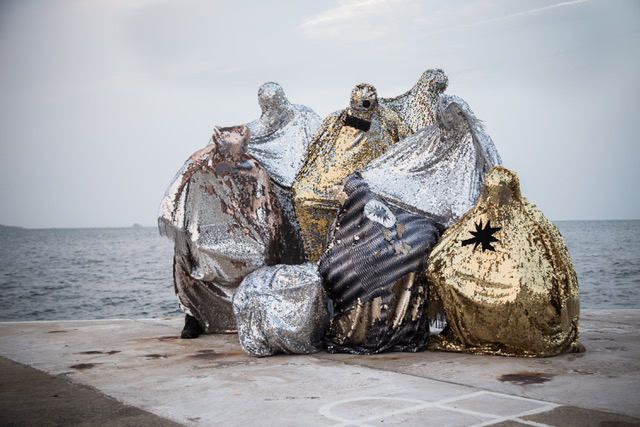Words by Ines Carvalho.
Diorama is a series of performances conceived to explore the natural and urban landscapes in various environments. The Norwegian choreographer Ingri Fiksdal turns the city space into an open stage for active and accessible participation; the audience is invited to experience the passing of time, the landscape changing and how the human body places its physicality across different contexts.
The performance was part of Fest en Fest 2020 edition, a festival curated by H2DANCE which happens annually across London, with satellite events in Colchester and Cambridge. Bringing together UK and Nordic artists, Fest en Fest aims to create moments of dialogue, critical thinking and provocation through daring pieces.
With three presentations in the heart of Greenwich, Diorama was performed by students of the London Contemporary Dance School. Inspired by the challenges of performing in the urban space, we asked Ingri more details about this piece, the relevance of producing outdoor performances and how that might change the relationship between audience and artists.
Q: What was the inspiration behind Diorama?
A: Diorama was originally made as a commission for live-arts organisation Situations (Claire Dorothy) and their project The Tale. The Tale was a travel through Torbay, where the audience got to experience a series of artworks made for the different places in the area. Our site was a seaside pool in the city of Brigham (England). The word diorama often refers to a three-dimensional model of a landscape, such as those displayed in museums of natural history. Another use of the word is for the French diorama theatre, invented by Louis Daguerre in 1822, where the audience were sat watching big landscape paintings transform through skilfully manipulated lights, sound effects and live performers. In our Diorama, we took inspiration from the above, and tried to make something which both blended in with the landscape as well as drawing attention to it.
Q: Was this performance always planned for the urban space since the beginning?
A: We initially performed a panoramic version of the piece that took place in front of a view and often by the seaside, and audience were sat in a row of chairs watching the full duration of the piece. But lately, we have been trying to do another version for urban space, where people can come and go as they please and also come closer to the performers.
Q: Diorama has been already performed in different places and contexts — does the performance change depending on the location?
A: Yes, both composition as timing as well as the feeling of the piece changes depending on the site and context.
Q: The materials used are key points in Diorama. Can you tell us a bit more about them?
A: The costumes were created by Fredrik Floen and they are made from silver and gold sequin plus other shiny materials. The idea was that the materials both reflect the surroundings as well as drawing attention to themselves. They are shaped in ways that extend and hide the bodies of the performers.
Q: The performers are entirely covered and dehumanised. Are they distant from humanity and society?
A: The initial attempt was that they could be part of the landscape. I was creating associations to large rocks, fish or sea creatures or even trash or plastic left by humans. This is also reflected in the movement qualities. The covering of the performers is also a meditation on the human/other-than-human binary discussed in post-anthropocentric discourse, where a decentring of the human is prompted. In order to slow down/stop climate change and over-consumption, it is necessary that we stop seeing ourselves as the top of the species hierarchy, and instead as part of a larger assemblage of human and other-than-humans.
Q: In which ways do you think the urban landscape can influence the performances?
A: The viewing of the performance becomes quite different when the audience can move freely about and choose the proximity they want to watch the piece. Also, architectural elements such as walls and staircases affect how we can compose in space.
Q: In your opinion, what is the most challenging aspect of street performance? And what is the most relevant point?
A: I like the fact we are able to meet audiences that wouldn’t necessarily come to a ticketed event at some arts venue. It is also challenging to ensure that the performers are always safe. We have had a few cases in the past where audience members have pushed or kicked them.
Image: Briony Campbell.
